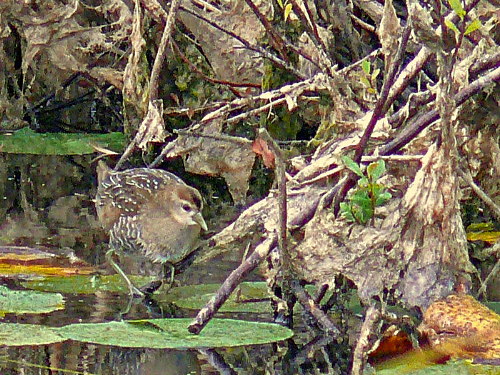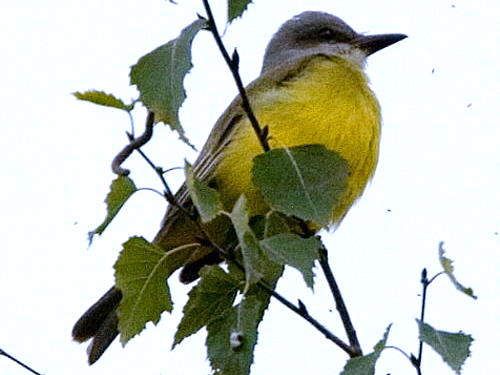Sep |
What to see in October? |
Nov |
||
| Week 40 | Week 41 | Week 42 | Week 43 | Week 44 |
Look for Cackling Goose amongst the Canada Geese flocks. Cacklers look just the same, only they’re barely bigger than a duck, and have very short necks and bills. The goose flocks can also contain occasional Greater White-fronted Geese (brown with orange bills).
Look for flocks of American Wigeon, Northern Shoveler, and Northern Pintail overhead. Green-winged Teal will be flying or in the slough and ponds. Small black-and-white Buffleheads should be found by mid-month from the lake platform. Common Mergansers can often be seen fishing at the weir. Unlike the rest of the ducks, Wood Duck numbers will be dropping throughout the month.
Grebes and Gulls will return also. Large flocks of Mew and Ring-billed Gulls will likely spend mornings on the grass soccer fields.
Short-eared Owls might be seen pre-dawn over the East Meadow. Northern Shrike and Western Meadowlark may be found in the East Meadow later in the day. American Pipits might be found on any open ground.
Hermit Thrush will pass through after the Swainson’s Thrush leave. Yellow-rumped Warblers should be ubiquitous. Cedar Waxwings should be plentiful, but decreasing.
Look for White-throated Sparrow amongst flocks of Golden-crowned Sparrows.
Rarities in October have included Trumpeter Swan, Pacific Loon, Red-necked Grebe, Rough-legged Hawk, Sora, Pectoral Sandpiper, Dunlin, Barred Owl, Tropical Kingbird, Horned Lark, Mountain Chickadee, Blue-gray Gnatcatcher, American Dipper, Snow Bunting, American Tree Sparrow, Clay-colored Sparrow, Swamp Sparrow, and Common Redpoll.
|
|
|

